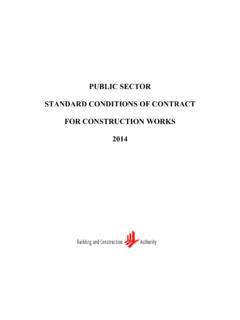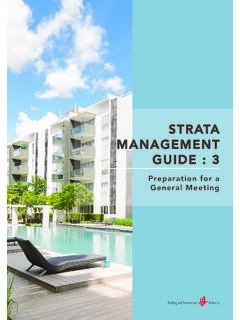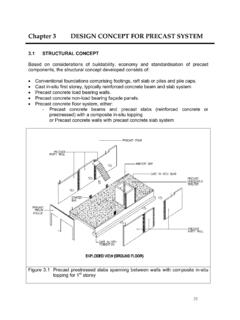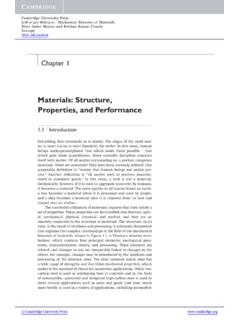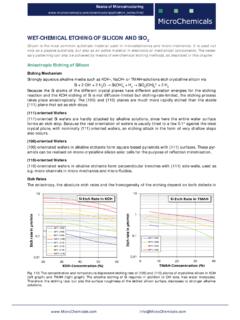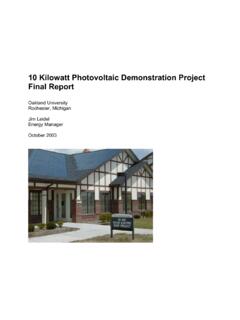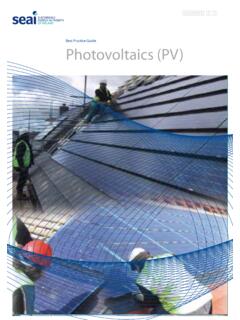Transcription of Solar Photovoltaic (PV) Systems
1 1 Handbook for Solar Photovoltaic (PV) SystemsContents1 Solar Photovoltaic ( PV ) Systems An Overview 4 Introduction 4 Types of Solar PV system 5 Solar PV Technology 6 crystalline silicon and Thin Film Technologies 8 Conversion Efficiency 8 Effects of Temperature 9 Technical Information 102 Solar PV Systems on a Building 12 Introduction 12 Installation Angle 12 Avoid Shading PV Modules 13 Aesthetic and Creative Approaches in Mounting PV Modules 14 Solar PV Output Profile 14 Solar PV Yield 15 Cost of a Solar PV system 153 Appointing a Solar PV system Contractor
2 16 Introduction 16 Getting Started 17 Get an Experienced and Licensed Contractor 17 Choosing Between Bids 17 Solar PV system Warranty 17 Regular Maintenance 19 Other Relevant Matters 194 Solar PV system Installation Requirements 20 Electrical Installation Licence 20 Electrical Safety Standards and Requirements 20 Application of Electrical Installation Licence 21 Conservation and Development Control Requirements 21 Guidelines on Conservation and Development Control 21 Structural Safety and Lightning Protection 22 Structural Safety 22 Lightning Protection 22 Connection to the Power Grid 22 Get Connected to the Power Grid 23 Sale of Solar PV Electricity 23 Design and Installation Checklist 275 Operations and Maintenance 28 Operations of Solar PV Systems 28 Recommended Preventive Maintenance Works 291 AppendicesAPPendIx A exAMPleS Of Solar PV system On BuIldIngS In SIngAPORe ZERO ENERGY BUILDING @ BCA ACADEMY 32 POH ERN SHIH
3 (TEMPLE OF THANKSGIVING) 34 313 SOMERSET CENTRAL 36 SENTOSA COVE 38 MARINA BARRAGE 40 LONZA BIOLOGICS 42 ZERO ENERGY HOUSE 44 TAMPINES GRANDE 46 HDB APARTMENT BLOCKS AT SERANGOON NORTH PRECINCT 48 HDB APARTMENT BLOCKS AT WELLINGTON CIRCLE PRECINCT 50 APPendIx B ENGAGING A LICENSED ELECTRICAL WORKER 52 APPendIx C CONTACT INFORMATION 54 APPendIx d InCentIVeS fOR Solar PV system Solar CAPABILITY SCHEME (SCS) 55 MARKET DEVELOPMENT FUND (MDF) 56 GREEN MARK SCHEME 57 GREEN MARK GROSS FLOOR AREA (GM-GFA) INCENTIVE SCHEME 58 $100 MILLION GREEN MARK INCENTIVE SCHEME 59 FOR ExISTING BUILDINGS (GMIS-EB) ENHANCED $20 MILLION GREEN MARK INCENTIVE SCHEME FOR 60 NEW BUILDINGS (GMIS-NB)2 Cognizant of the growing popularity of Solar Photovoltaic (PV)
4 Installations amongst residential dwellers as well as building developers, and the corresponding demand for a comprehensive set of technical and regulatory information, the Energy Market Authority (EMA) and the Building Construction Authority (BCA) got together earlier this year to work on integrating their respective Solar manuals into an all-in-one reference guide for those who are keen on installing Solar PV Systems in Singapore. The outcome of this joint project, which also saw the involvement of industry partners and stakeholders such as Phoenix Solar Pte Ltd, Grenzone Pte Ltd, Solar Energy Research Institute of Singapore (SERIS) and Singapore Polytechnic, is this Handbook for Solar Photovoltaic (PV) Systems .
5 Through this integrated and revised handbook, we hope to be able to provide a comprehensive guide to the relevant parties, including owners, developers, engineers, architects, Licensed Electrical Workers and electricians on the key issues, requirements and processes pertaining to the installation of Solar PV with the previous edition of the handbooks, this single volume covers and provides information on licensing, market and technical requirements, and building and structural issues that are related to the implementation of Solar PV Systems in a building environment.
6 In addition, it provides new information on the installation requirements for Solar PV Systems , operations and recommended preventive maintenance works, and various incentives to promote Solar PV Systems in Singapore. We have also refreshed the presentation of the handbook to make it more accessible and reader-friendly, as well as to incorporate examples of completed Solar PV installations in Singapore. We hope you will find this to be a useful tan Ang Kian SengDeputy Chief Executive DirectorEnergy Planning and Development Division Centre of Sustainable Building & ConstructionEnergy Market Authority Building and Construction Authorityforeword233 AcknowledgementsWe would like to thank the following organisations for their support and contributions in the development of this handbook.
7 1) Grenzone Pte Ltd 2) Phoenix Solar Pte Ltd3) Singapore Polytechnic4) Solar Energy Research Institute of Singapore (SERIS)5) SP PowerGrid6) Urban Redevelopment Authority 41 Solar Photovoltaic ( PV ) Systems An Overview figure 1. the difference between Solar thermal and Solar PV Systems Introduction The sun delivers its energy to us in two main forms: heat and light. There are two main types of Solar power Systems , namely, Solar thermal Systems that trap heat to warm up water, and Solar PV Systems that convert sunlight directly into electricity as shown in Figure 1.
8 When the PV modules are exposed to sunlight, they generate direct current ( DC ) electricity. An inverter then converts the DC into alternating current ( AC ) electricity, so that it can feed into one of the building s AC distribution boards ( ACDB ) without affecting the quality of power supply. 5 Chapter 1 Solar Photovoltaic ( PV ) Systems An OVeRVIewfigure 2. grid-connected Solar PV system Types of Solar PV system Solar PV Systems can be classified based on the end-use application of the technology. There are two main types of Solar PV Systems : grid-connected (or grid-tied) and off-grid (or stand alone) Solar PV Systems .
9 Grid-connected Solar PV Systems The main application of Solar PV in Singapore is grid-connected, as Singapore s main island is well covered by the national power grid. Most Solar PV Systems are installed on buildings or mounted on the ground if land is not a constraint. For buildings, they are either mounted on the roof or integrated into the building. The latter is also known as Building Integrated Photovoltaics ( BIPV ). With BIPV, the PV module usually displaces another building component, window glass or roof/wall cladding, thereby serving a dual purpose and offsetting some costs.
10 The configuration of a grid-connected Solar PV system is shown in Figure 2. A building has two parallel power supplies, one from the Solar PV system and the other from the power grid. The combined power supply feeds all the loads connected to the main ACDB. The ratio of Solar PV supply to power grid supply varies, depending on the size of the Solar PV system . Whenever the Solar PV supply exceeds the building s demand, excess electricity will be exported into the grid. When there is no sunlight to generate PV electricity at night, the power grid will supply all of the building s 1 Solar Photovoltaic ( PV ) Systems An OVeRVIewfigure 3.

